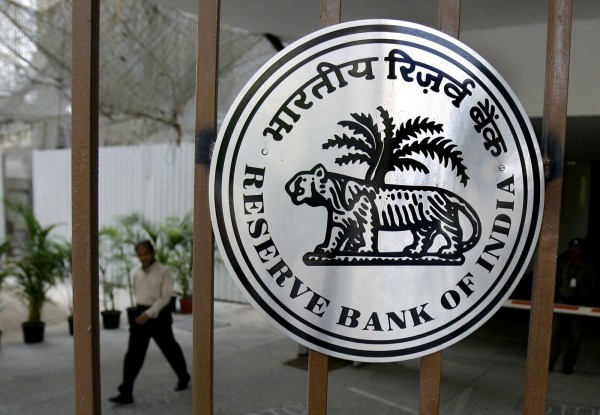
As the days go by, pressure is mounting on Governor Raghuram Rajan and by the time the Reserve Bank of India’s monetary policy committee meets on Tuesday (June 2) a decision is very likely on the question everyone wants answered: Why are interest rates not being cut?
If slowing inflation and the urgent need to jump-start growth were not reasons enough, this week the Chief Economic Advisor, Arvind Subramaniam came out and publicly exhorted the RBI Governor to act. “ In the short run, the economy needs policy support to boost consumption through cheaper financing, through public investment and measures to boost private investment and kick start all these stalled projects,” said Subramaniam as per an Asian Age report titled ‘Arvind Subramaniam warns India of Currency Wars.’
The Bane Of A Strong Rupee
Even ignoring the alarmist headline, the situation is grave, to say the least. The economy is stalled and failure to cut interest rates is putting upward pressure on an already robust rupee. As financial journalist and editor, T N Ninan writes in his column titled ‘What’s RBI Smoking?’ in Business Standard, “The only major currencies that have gained against the rupee over the past 12 months are the Chinese yuan (by about one per cent) and the US dollar (by slightly more than two per cent). Against these minor drops in rupee value, India’s currency has gained against the euro by about 20 per cent, against the pound by about eight per cent, and against the yen by about 13 per cent.”
While a strong rupee may be good news for those jetting off on foreign holidays as the same amount goes farther, what it does unfortunately is make Indian goods uncompetitive in the global arena. It becomes more expensive to produce goods in India and exports have hit rock-bottom. As Boom reported earlier: “The INR has been appreciating steadily, seriously hampering the export-competitiveness of Indian firms in the global market. According to the Centre for Monitoring Indian Economy (CMIE), Indian exports tanked by 15% to touch a 51-month low in February this year.”
What high interest rates do further is encourage Indian businesses to borrow money internationally instead of seeking local credit. When they do that, the fresh inflow of dollars adds further pressure to the already strong rupee. In effect; making a bad situation worse.
While the official position may be that they don’t ‘interfere’ in currency markets, central banks across the world -- be it US Federal Reserve or the European Central Bank -- keep an eye on the sovereign currency. When required, they intervene and act. Without a supportive currency policy any manufacturing-led growth initiative like ‘Make in India’ is unlikely to succeed. The point the CEA made is that monetary and exchange rate policies need to work together to ensure competitiveness of the rupee.
China which has built up a successful export-led growth model has been very proactive. On one hand it has been buying dollars to boost its reserves estimated at $4 trillion and on the other it has been aggressively cutting interest rates to remain internationally competitive.
The Right Time Is Now
What makes it perplexing is that everyone agrees that the time is right for the RBI to cut rates. Internationally there is an environment of easing with close to a dozen central banks acting to stimulate growth this year. In fact even Governor Rajan recently said that “an excessively strong rupee is undesirable.”
Inflation (or its fear) – which is most often used by the central bank to defer rate cuts – is at an all time low. The Consumer Price Index (CPI) is around 5%, while the wholesale price index (WPI) is negative at -2.67%. The Firstpost piece ‘CEA Arvind Subbu is right, Rajan should stop being a shrinking lily on rate cuts’ by R Jagannathan calls for a rate cut of a full one percent this year followed by another percent next year.
Low rates are essential because they spur economic growth. Lower rates will make it cheaper for industry and consumers to borrow money kick-starting the cycle of consumption. Domestic banks and financial institutions will be prompted to lend and finance infrastructure projects. There will be a greater demand for retail personal and home loans as the rate cuts are passed on to customers. If exports pick up as they are predicted to, it offers an excellent opportunity to correct the $30 billion trade deficit.
Fiercely independent, the RBI has a history of being unpredictable when it comes to rate cuts. Earlier this year, on March 4, it surprised everyone when it unexpectedly cut rates by 25 basis points. Markets were expecting the RBI to act only on April 7, its scheduled meeting date. In the last RBI monetary policy meeting the central bank kept the benchmark base rate unchanged at 7.5 % and insisted that banks pass on the interest rate cuts announced earlier to customers
Economic data published today points to the first signs of a recovery with the economy growing at 7.3% last year, powered by the manufacturing and services sectors. Provisionally for the fourth quarter, growth has been pegged at 7.5%.
If Governor Rajan obliges on Tuesday, it just may be the trigger we all have been waiting for.